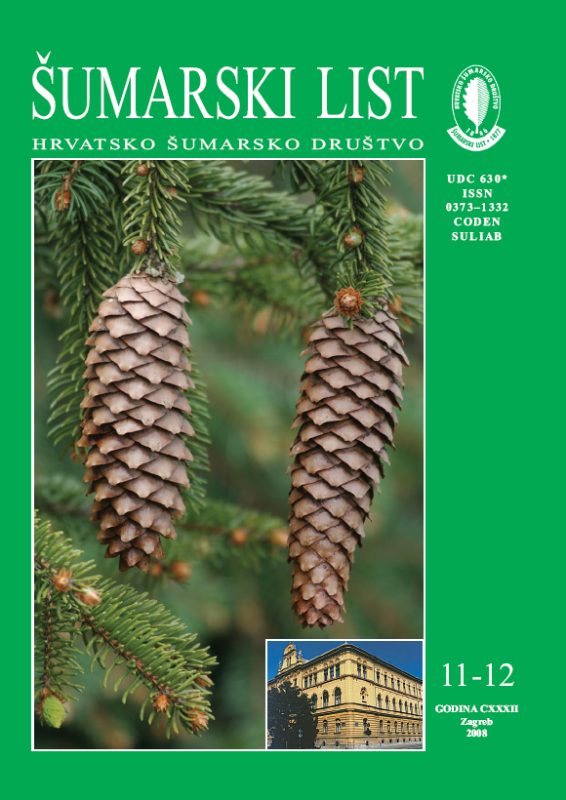
broj: 11-12/2008
pdf (7,1 MB) |
|
||||||||||||||
| RIJEČ GLAVNOGA UREDNIKA | ||
| Branimir Prpić | ||
| AT THE END OF THE YEAR PDF HR EN | 504 | |
| In every developed country, the end of the year is the time of evaluating successes and failures. Croatia, with over 2 million ha or high quality natural forests, definitely belongs to these countries. Successes of Croatian forestry include strict adherence to nature-based forest management, attainment of biological diversity similar to that in virgin forests, high quality of raw material, large quantities of biomass energy and the achievement of very important non-wood forest functions. All these successes are due to the application of special silvicultural treatments. On the other hand, we experience enormous losses of forest areas due to various infrastructural facilities constructed without any consultation with the forestry profession. Such practice, involving political pressures and disgracefully low prices, has especially endangered lowland forests of pedunculate oak and Mediterranean forests. The objective price of forests, forest raw materials, energy and other non-timber functions far exceeds the value of transmission lines, roads, waterways and hydropower stations. To make matters worse, such developments are allowed by hastily passed by-laws. In addition to Croatia’s efforts to join the European Union, we should also point out the establishment of the National Ecological Network as part of the European Ecological Network and the NATURA 2000 network. Nature-based silviculture is considered to provide good protection for forests. In the case of Croatian forests, in which silvicultural treatments are applied according to the above method, no additional protection is necessary. On behalf of Petar Jurjević, MSc., president of the Editorial Council of “Forestry Joural”, Hranislav Jakovac, BSc, technical editor, all members of the Editorial Council, Damir Delač, BSc, secretary of the Croatian Forestry Society and myself, I would like to take this opportunity to wish a Merry Christmas and Happy New Year to all readers of “Forestry Journal”. Professor Branimir Prpić, PhD | ||
| IZVORNI ZNANSTVENI ČLANCI | ||
| Anić, I., S. Mikac | UDK 630* 907 : 569 + 221 + 231 (001) | |
| Structure, Texture and Regeneration of Dinaric Beech-fir Virgin forest of Čorkova Uvala pdf HR EN | 505 | |
| Matošević, D. M. Pernek, M. Županić | UDK 630* 453 (001) | |
| Leafminers as Pests on Oaks (Quercus Spp.) in Croatia pdf HR EN | 517 | |
| Ivanković, M., S. Bogdan, G. Božič | UDK 630* 561 Fagus sylvatica L. (001) | |
| European Beech (Fagus sylvatica L.) Height Growth Variability in Croatian and Slovenian Provenance Trials pdf HR EN | 529 | |
| STRUČNI ČLANCI | ||
| Frković, Alojzije | UDK 630* 156 | |
| Reintroduction of Chamois in Northern Velebit pdf HR EN | 543 | |
| Meštrić, Branko | UDK 630* 945 | |
| Digitization of Journal of Forestry pdf HR EN | 551 | |
| Domac, J., Z. Benković, T. Starčić | UDK 630* 867 | |
| Development of a sustainable charcoal industry pdf HR EN | 555 | |


